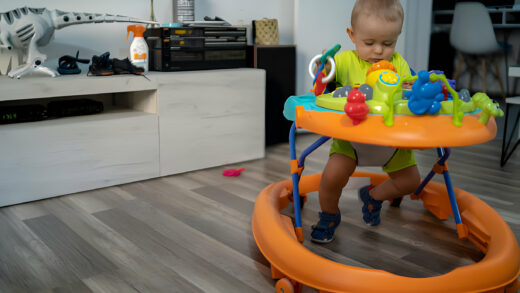This blog post will go over When Is My Baby Too Big for an Infant Car Seat. When is it time for your child to graduate from the car seat? As parents, one of our most important tasks is to keep the child safe when we travel with them. When they are small, this can be done through a car seat that will protect them when they are riding in the car.
It’s a question every parent asks sooner or later: when is my baby too big for an infant car seat? Here’s a guide to help you make the switch. This is a question many parents ask when they see other children on the bus or at school without a car seat.
When Is My Baby Too Big for an Infant Car Seat?
Car seats are typically designed to carry children up to 22 pounds. This is usually around the age of six months, although it can vary depending on factors such as height and build.
For example, a child who is tall for his or her age or has long legs may reach this weight limit earlier than average, while one who falls outside the norm will not need an upgrade until later in life.
Parents should keep in mind that they cannot use their car seats after their children have outgrown them, because safety standards change over time as new research becomes available.
If you continue to rely on your old model instead of upgrading accordingly, your child runs the risk of injury while traveling due to poor accommodations made by manufacturers regarding newer models that offer greater safety.

When Is My Baby Too Big for an Infant Car Seat
How do you know when your child has a car seat that is too big?
When your child has reached the maximum height and weight specified by the car seat manufacturer, it’s time to get in.
The American Academy of Pediatrics recommends leaning back until at least two years of age or when the maximum weight and length limits for that particular seat model are reached.
They don’t recommend making the transition before then because it increases the chances of serious injury to a child in an accident, even if you’re using a forward-facing convertible seat with harnesses rather than installing your child in the vehicle’s regular seat belts.
What happens if the child is too big for the car seat?
If your baby is too big for the car seat, you need to find another way to transport him or her safely. Some parents use a forward-facing stroller or carry the baby in a baby carrier on their chest.
Another option might be an umbrella stroller, which works better than one with wheels because it will sit higher off the ground and provide more support while carrying.
If none of these options work, consider using something like a baby carrier until the child fits back into the designated safety seats, at which point they can return to those types instead.
How long can a child stay in a Graco car seat?
It is recommended that a child be kept in a car seat until he or she weighs at least 20 pounds. However, some parents choose to keep the child in the car seat much longer if it makes the child feel more comfortable while driving or when moving from one place to another.
It is also important not to leave children unattended in a Graco car seat for safety reasons.
What is the next car seat after the newborn?
The next car seat after the infant is a convertible or combination car seat. It can be used as rear-facing and forward-facing, so it is mainly for children between the ages of one and four.
How much should a child weigh before being forward-facing?
Children should be at least one year old and weigh at least 20 pounds before being forward-facing. Some parents choose to turn their children before this if the child is tall enough, but it is not recommended because of safety issues such as extra space between a car seat and an airbag.
What is the height and weight limit for a child car seat?
Car seats are generally safe up to about 22-40 pounds or until the child is about one year old depending on the seat.
It is best for parents to consult the vehicle owner’s manual and/or manufacturer’s car seat guidelines for weight and height limits (if applicable) before installing a car seat in a particular vehicle.
When can my baby be in a forward-facing car seat?
Your child can be in a forward-facing car seat when he or she has outgrown a rear-facing one. This is typically about 22 pounds and at least two years of age, although some children may have to stay there until they are closer to three before it is safe for them to move forward.
You should check with your pediatrician if you have concerns about this as every child is different and we all want the best for our children!
But even so, most parents will find that their little ones are ready long before then, as well as those who end up falling behind longer than expected (which happens surprisingly often).
The only exception would be children over 40 pounds who are likely to stay in a five-point harness longer than those under 40 pounds.



